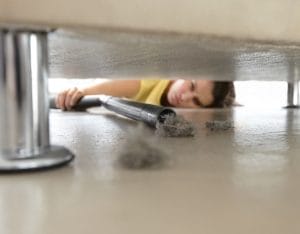At Allergic Living, we’ve created a guide to help those with asthma sleep, live, work, play and, most importantly, breathe better.
Let’s start with asthma triggers. These are things in the environment that set off your asthma symptoms. Asthma triggers vary a lot. They can be the pollens from trees or grass, or animal dander, smog, cigarette smoke, and even viral infections such as colds.
Pay attention to when you typically have symptoms to figure out what triggers your asthma, says Dr. Paul Ehrlich, past president of the New York Asthma & Allergy Society and a pediatric allergist in New York City. “Are you better or worse at night? Are you worse when you get to school or work? Are you worse when you try to play, or do athletics or exercise? How do you do in winter, fall, summer, spring? How do you do on vacation?”
Allergy testing can help to determine whether allergens such as pollen, pets, dust mites or mold trigger your asthma.
Rosario Holmes, an asthma educator with the Canadian Lung Association, sees patients at two ends of the spectrum. Some are completely aware of their asthma triggers, and do everything in their power to avoid them, and some who seem oblivious.
“If they know their triggers, they can find control and they can reduce medication. They’re happier, they have a better life.”
Common Asthma Triggers
1. Cats
 Photo: Thinkstock
Photo: Thinkstock While most specialists would agree the best thing to do if you have a cat that triggers your asthma is to find it a new home, Ehrlich says he’s all but given up offering this advice to patients. “People just don’t do it,” he says.
There are strategies, however, to minimize your exposure to the cat’s protein if you decide to keep it. “One is to make sure the areas that you spend most of the time are as pet-free as possible. The bedroom is a key area,” says Dr. Stanley Szetler, head of pediatric clinical pharmacology at National Jewish Health in Denver, who was on the National Heart Blood and Lung Institute panel that developed national guidelines for the diagnosis and management of asthma.
Szetler also recommends air purifiers in the bedroom, and a filter in the air conditioner that can “catch some of the hairs and dander that go around.” But ultimately, he says: “You have to make a decision about whether you want more medication or not to have the animal in the house.”
2. Environmental Allergens
 Photo: Getty
Photo: Getty Pollens can be tough to avoid. “When you talk about dust and dander, mold and mildew in the home, we have a pretty good handle on how to keep those to a minimum, says Christyne Soden, a health-care consultant and former vice-president of the Association of Asthma Educators. “But the minute you step out your door you’re in a whole other environment.”
Still, it’s important to do your best minimize exposure. “You want to do as much as you can practically to try to avoid increasing the medications, because the more medications you add on, the higher the doses, the more risk you have for adverse side effects,” says Szetler.
Avoiding Pollen
- Keep doors and windows closed during peak pollen hours (early to mid-morning).
- Use air conditioning with HEPA filters.
- Avoid hanging laundry outside (it gathers pollen).
- Take a shower when you come in from the outdoors.
- If you are grass allergic, have someone else mow the lawn.
3. Dust Mites
 Photo: Getty
Photo: Getty Dust mites are microscopic insects that live in your carpet, furniture, mattresses, bedding – even your children’s stuffed toys. And, says Ehrlich, they’re hard to get away from. “I don’t care if you’re a fanatical cleaner, they are ubiquitous no matter what you do.”
While it’s impossible to eliminate dust mites, the fewer allowed to thrive in your environment, the less medication you’ll have to take to stay symptom-free.
Minimizing Mites
- Dust mites need moisture to live, so keep the humidity level in your home low (between 40 and 50 percent).
- Encase your mattress and pillows in mite-proof covers and wash bedding weekly in hot water.
- Put stuffed toys in the freezer for 24 hours, as freezing kills dust mites.
- Where possible, avoid having carpet and upholstery.
4. Other Triggers
Cigarette smoke irritates the lungs of most people with asthma – and it doesn’t need to be you who’s doing the smoking. Second-hand smoke and even “third-hand” smoke, the particles that linger in the air, on furniture, in clothing and in cars after the cigarette has gone out, can cause asthma to flare, especially in young children.
Exercise can be an asthma trigger for many, but this doesn’t mean it should be avoided. You may, however, need to modify your routine until your asthma is under control, or use your bronchodilator before exercising.
Other triggers include mold, cockroaches, cold air, viral infections and even stress.
See Also: Asthma: Medication is a Must





